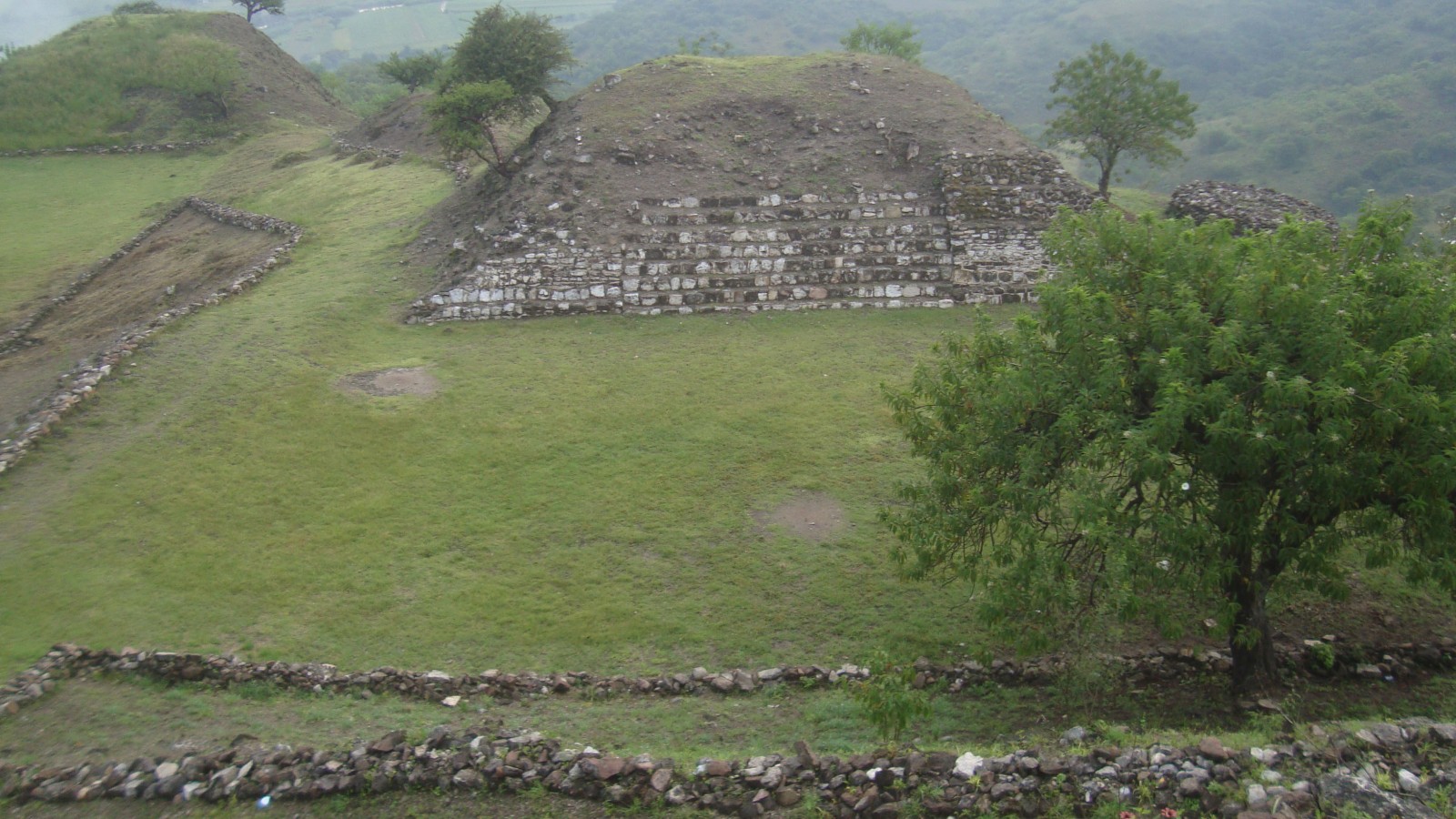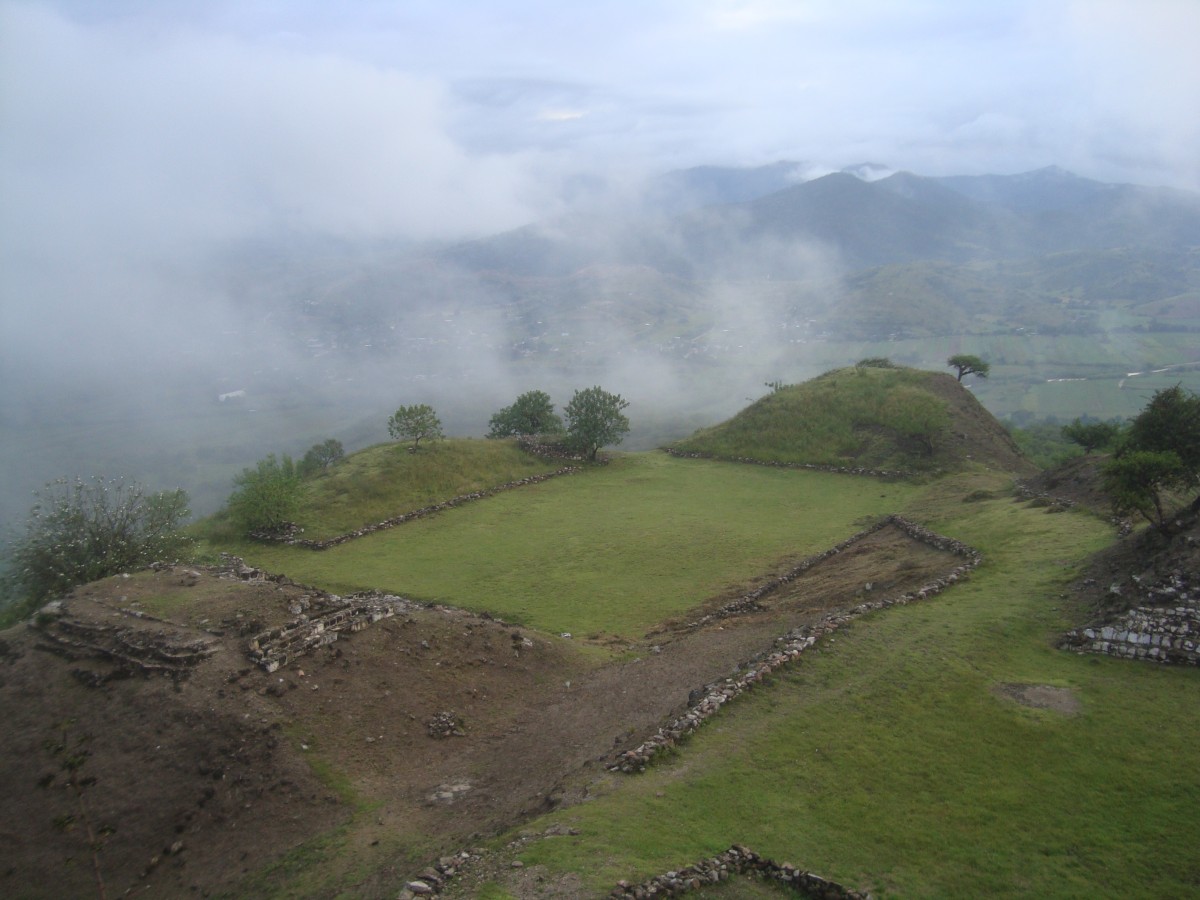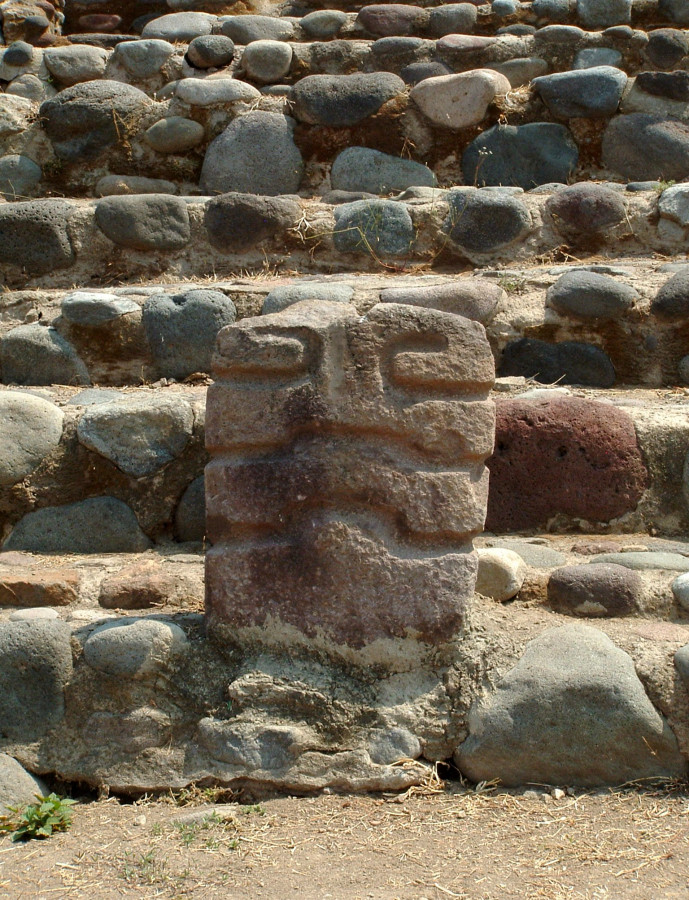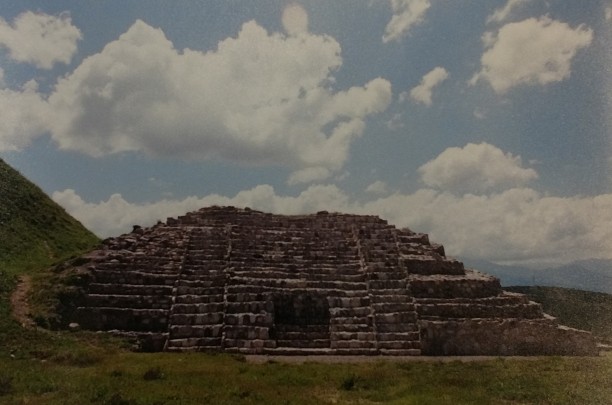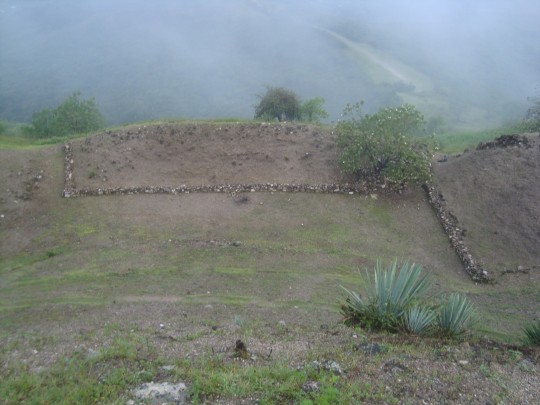Cerro de la Campana (Huijazoo)
Huijazoo: war fortress
An ancient Zapotec city whose Tomb 5 contained a plethora of symbols and beautiful figures, considered one of the finest examples of funerary art in ancient Mexico. It has a rich array of religious buildings from 300 and 800 AD when the city was flourishing.
About the site
The Cerro de la Campana archeological site is in the far north of the Etla valley, barely 20 miles from Oaxaca City. The site is within the bounds of the municipality of Santiago Suchilquitongo, which is next to the municipality of Huitzo. The full area of the site covers 235 acres, which includes modifications to the rocky landscape including embankments and terraces used for dwellings.
For a few hundred years this civic and administrative center was the dominant force holding together the Zapotec towns in the north of the Etla valley. The architectural remains visible today come from the period 650 to 700 AD when the settlement was the seat of government for the Zapotecs of the valley. Its notable features are its strategic position and the aesthetic quality of the figures in Tomb 5, which were found during the 1985 excavations. The city was abandoned around 800 for reasons that are still not understood.
As mentioned above, the archeological excavations in 1985 resulted in the discovery of Tomb 5. This burial of nearly 60 people includes wall paintings, two stucco masks of the lineage of the jaguar, ten doorposts with pairs of people dressed with jaguar-man lineage headpieces, place name and calendar glyphs as well as glyphs of owls, bats, jaguars and architectural features made using the best building technology of the period. The ceramics associated with the burial can be dated alongside Monte Alban period III, which was around 550.
The highest part of the land is in the central sector which consists of at least three large platforms, two of which are aligned east-west with another that spreads out organically in a northward direction from the monument area. The central sector consists essentially of seven major monuments, distributed on two platforms, the first of which supports Building 1, the site of the famous Tomb 5.
For a few hundred years this civic and administrative center was the dominant force holding together the Zapotec towns in the north of the Etla valley. The architectural remains visible today come from the period 650 to 700 AD when the settlement was the seat of government for the Zapotecs of the valley. Its notable features are its strategic position and the aesthetic quality of the figures in Tomb 5, which were found during the 1985 excavations. The city was abandoned around 800 for reasons that are still not understood.
As mentioned above, the archeological excavations in 1985 resulted in the discovery of Tomb 5. This burial of nearly 60 people includes wall paintings, two stucco masks of the lineage of the jaguar, ten doorposts with pairs of people dressed with jaguar-man lineage headpieces, place name and calendar glyphs as well as glyphs of owls, bats, jaguars and architectural features made using the best building technology of the period. The ceramics associated with the burial can be dated alongside Monte Alban period III, which was around 550.
The highest part of the land is in the central sector which consists of at least three large platforms, two of which are aligned east-west with another that spreads out organically in a northward direction from the monument area. The central sector consists essentially of seven major monuments, distributed on two platforms, the first of which supports Building 1, the site of the famous Tomb 5.
Practical information
Tuesday to Sunday from 09:00 to 17: 00 hrs.
Free entrance
Se localiza en el Valle de Tlacolula al sureste de la ciudad de Oaxaca.
From the city of Oaxaca take the Pan-American Highway 190 towards Mexico City, exit at Santiago Sulchiquitongo. 2 km further on, in Iglesia del Calvario, take the road heading north for 2 km more until you reach the rocky bluff on which the site is located.
Services
-
This email address is being protected from spambots. You need JavaScript enabled to view it.
Directory
Departamento de Protección y Resguardo de Bienes Culturales del Centro INAH Oaxaca
Manuel Rufino Aguilar Martínez
This email address is being protected from spambots. You need JavaScript enabled to view it.
+52 (951) 513 3346

